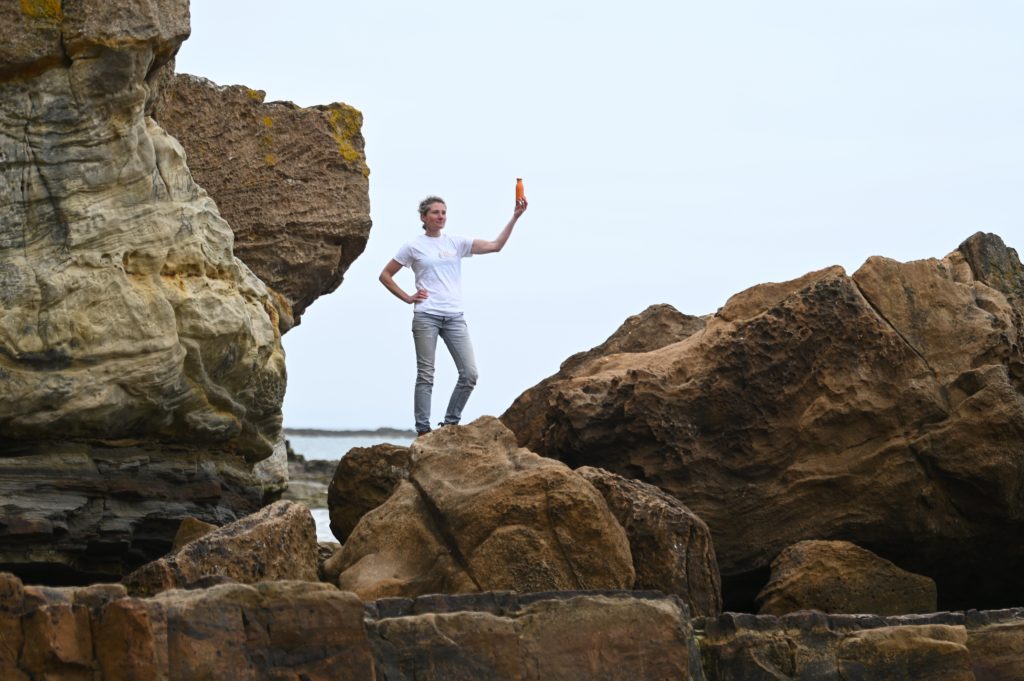Kirstie Campbell runs a social enterprise, based in tranquil East Lothian, which produces high quality seabuckthorn juice and other products.
This includes, "Buck Shot" which is made from 100 per cent buckthorn and "Buck Russian" which is based on a Soviet hangover cure, and contains organic ginger and raw cane sugar.
Seabuckthorn is a hardy ancient plant, covered with thorns which thrives on inhospitable conditions in mountainous and coastal regions around the world.

It grows where other plants can't survive, and is said to have mythical health properties, both Genghis Khan and Alexander the Great are said to have fuelled their armies on the stuff.
The latin name, Hippophae Rhamnoides means 'shiny horse' refers to ancient times after a battle, when the horses would be turned out in the wild.
Kirstie said,"they didn't expect to see them again but they came back bright eyed and bushy tailed with a shine to their coat having lived off seabuckthorn."
Her current role is a far cry from her previous career working in war torn countries, with the United Nations World Food Programme, The International Committee of the Red Cross (ICRC) and International Medical Core.
She first heard about seabuckthorn as food whilst on a mission, coordinating aid logistics after floods in Pakistan.
Kirstie started the business as a community interest company saying: "as my whole career was working in the charitable sector."
They have different strands to the enterprise: local collaborations, research and development, and education.
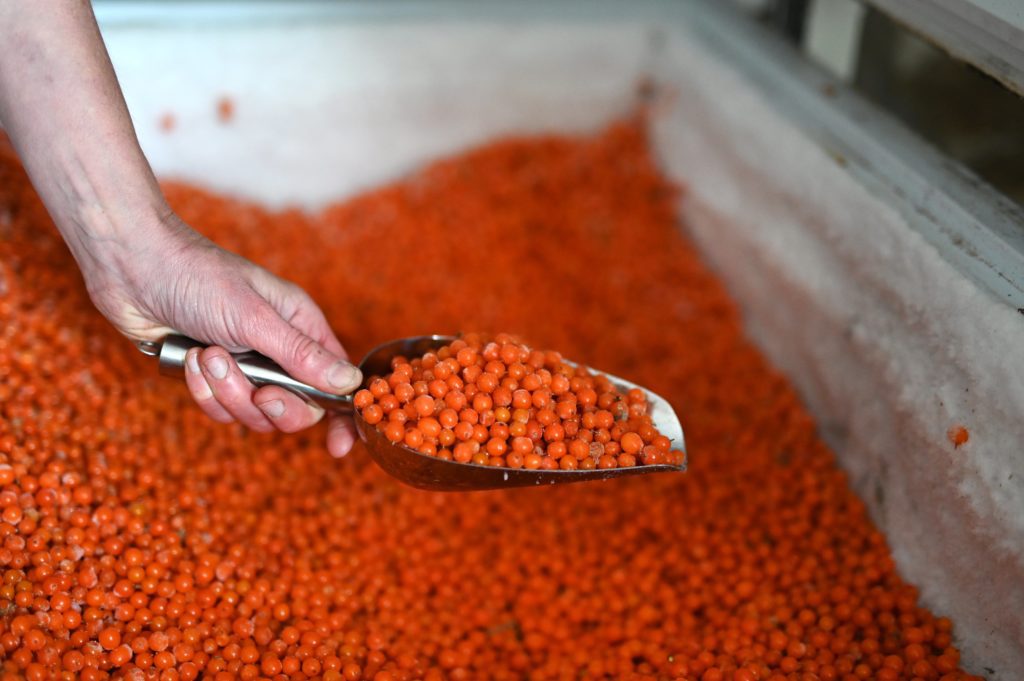
The super-fruit is frozen within minutes of being harvested, to keep the vitamins levels as high as possible, before being cleaned and pressed into unpasteurised juice, made to order in small batches to ensure maximum freshness.
It contains high levels of Omega 7 and also contains 3,6 ,9 as well as vitamins A, C and E but it has quite a sour taste.
Growing up in London, Kirstie's family moved to Hampshire when she was eight, but said, "my soul was always in the country."
She studied Chemistry at Edinburgh University and during the summer of her third year she headed off to the Balkans after the war had ended to help out with charity in Serbia.
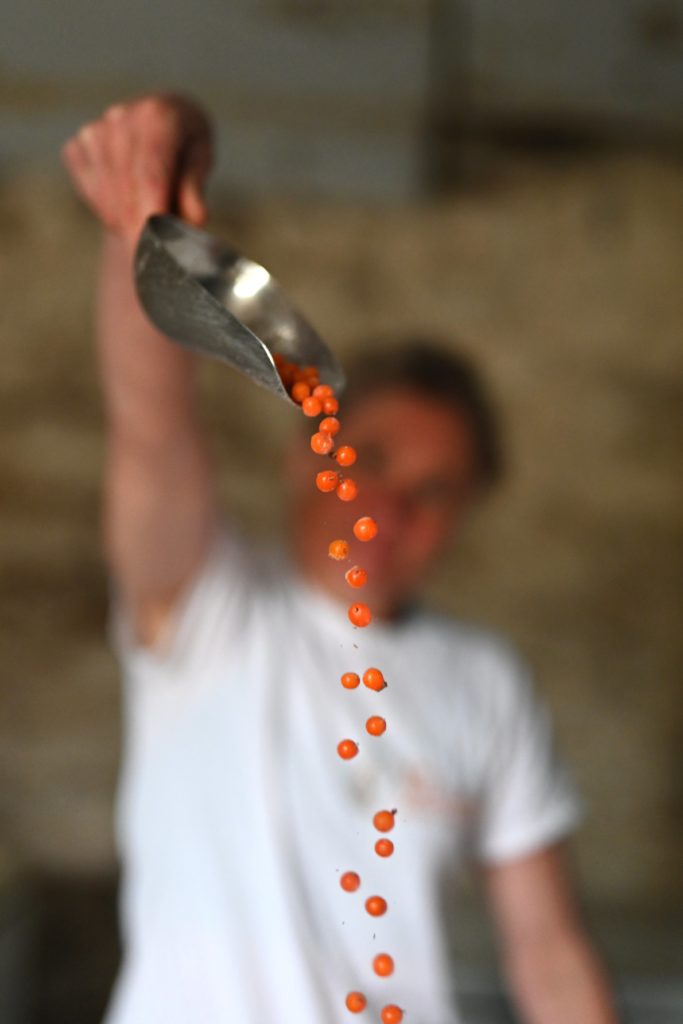
She travelled with a friend who had previously volunteered in Croatia and then travelled onto Belgrade, Sarajevo, Mostar, she explains, "suddenly there you are, staying in a house in Sarajevo where the child had been shot at by snipers a few years earlier."
She felt she had found her purpose, "an environment where I could make a difference, whereas at home I just didn't know what I was going to do, I hated Chemistry."
Kirstie completed her degree before volunteering at a children's project in Macedonia, then headed to Geneva to study for a Masters in Humanitarian Aid.
Geneva was a whole new experience, she believes, "It doesn't matter where you are in the world as long as you fit in with the culture then you won't go too far wrong. "
On the course she learned from people who had been working in the field, her internship was at ICRC and her dissertation tackled aid agencies relationships, with non state armed groups just prior to September 11th.
She then headed to Damascus to learn Arabic, then travelled to Iraq on a tourist tour, she said, "the timing seemed slightly odd with the sense of war looming, but I thought it would be amazing to see everything that might be destroyed."
On the tour they attended a football match where everyone thought they were the weapon inspectors, she said, " it was awful, they shouted 'Please, we have no weapons of mass destruction don't bomb us."
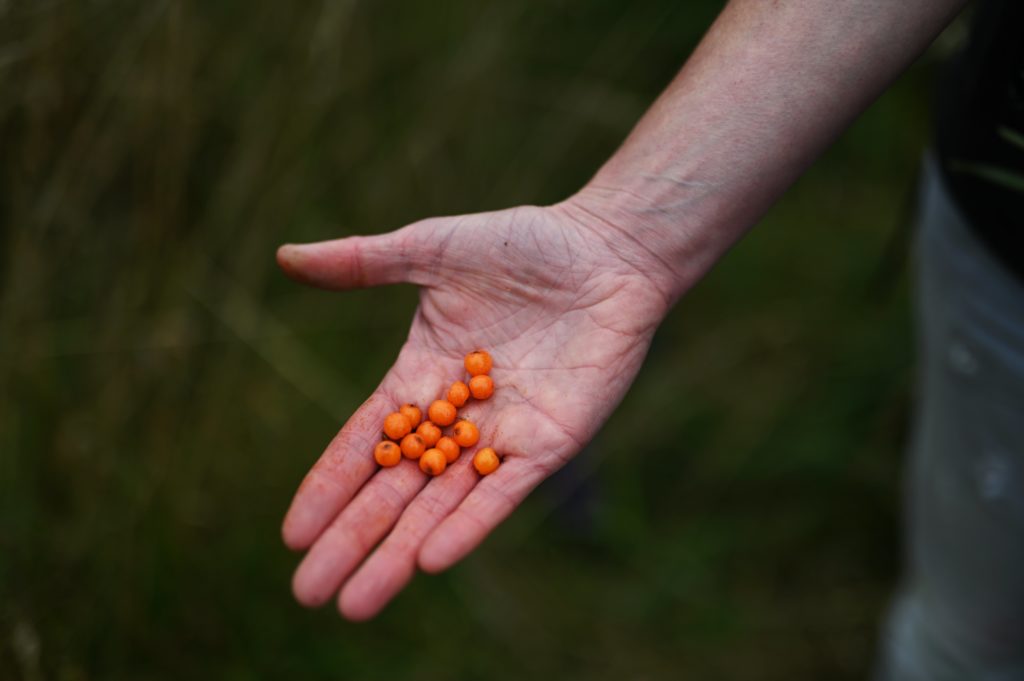
After that she jumped at the chance of volunteering with the Red Crescent on the Iraqi Jordanian border to help set up a refugee camp, she said, "no doubt from where we stood, there would be war as the US troops were all sitting in Kuwait, ready to go."
She spent time out in the desert staying in the camp with the refugees, experiencing the conditions, she said, "they were some deeply traumatised and absolutely terrified people."
She then went on to work for the International Medical Core in Nasiriyah, Iraq and then worked in Gaza for both the ICRC and World Food Programme.
Working in that environment, she said, "it became life. I loved the camaraderie. I felt I could make a difference. I found that niche where your skills for whatever reason fit."
After Gaza she went to Sudan, but then took some time out having burnt out.
In 2010 Kirstie was back in the thick of it in Pakistan, "it was great to be involved in real emergency where everyone is working together. There is a fast pace and you really can save lives through just small interventions."
Whilst there she heard about seabuckthorn as a food source from General Nadeem, the Pakistani commander of the National Disaster Management Authority,.
He explained the people in the North had survived on the plant for generations and would become aid reliant if you continued to feed them, Kirstie said, "that sounds harsh, but he is a very wise man."
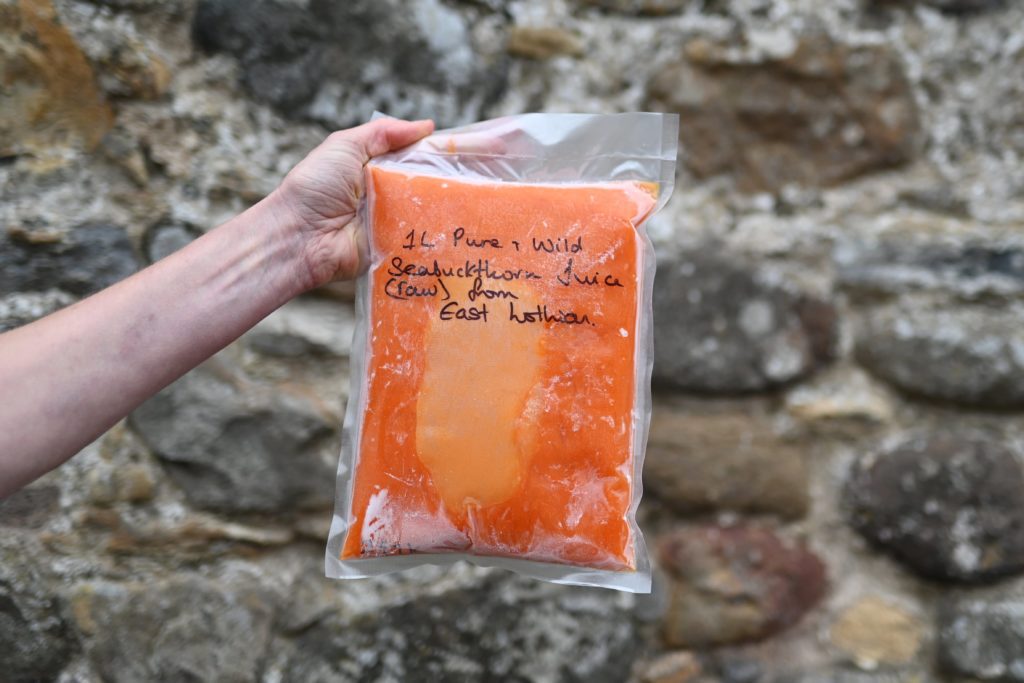
She then worked in Malta and Tunisia, coordinating aid headed for Libya and became frustrated by not being on the ground, so joined International Medical core in Misrata, with a spell in Tripoli and then Sirte.
Then she helped set up a supply route from Turkey to Northern Syria, she firmly believes aid should be given based on need and shouldn't be used as a weapon of war.
However having worked in the region, she said, " it was used as such, by the Assad government."
She began to feel her own safety was at risk, and a few of her friends were killed so she headed back to Edinburgh to ponder her future: "What the hell else am I going to do?"
Having worked in a dangerous high pressure environment, it took time to adjust; "When you are away for so long, you become rootless. I felt happy and at home in the Middle East I didn't know how life here worked anymore."
She found solace in being outdoors in nature, and volunteered at Red Hall Garden and was support by other charities.
When feeling stronger she rediscovered foraging and the health properties of seabuckthorn and perfected her "Buck Russian" recipe.

She then founded the company and was granted permission for commercial foraging by East Lothian Council, so with a startup grant from Forth Ports her next step was to find a suitable base of operation.
She explains, "a bit like looking at a location for the field hospital in Sirte, where I asked the rebels, What is the longest range missile that Gaddafi has? before looking on the map."
This time Kirstie was looking for a farm close to the beach with suitable outbuildings, to keep a low carbon footprint.
The Seabuckthorn are then processed straight from the beach, frozen, before being bashed to remove the berries, and sieved; "endlessly for hours to get all the leaves and twigs out. "
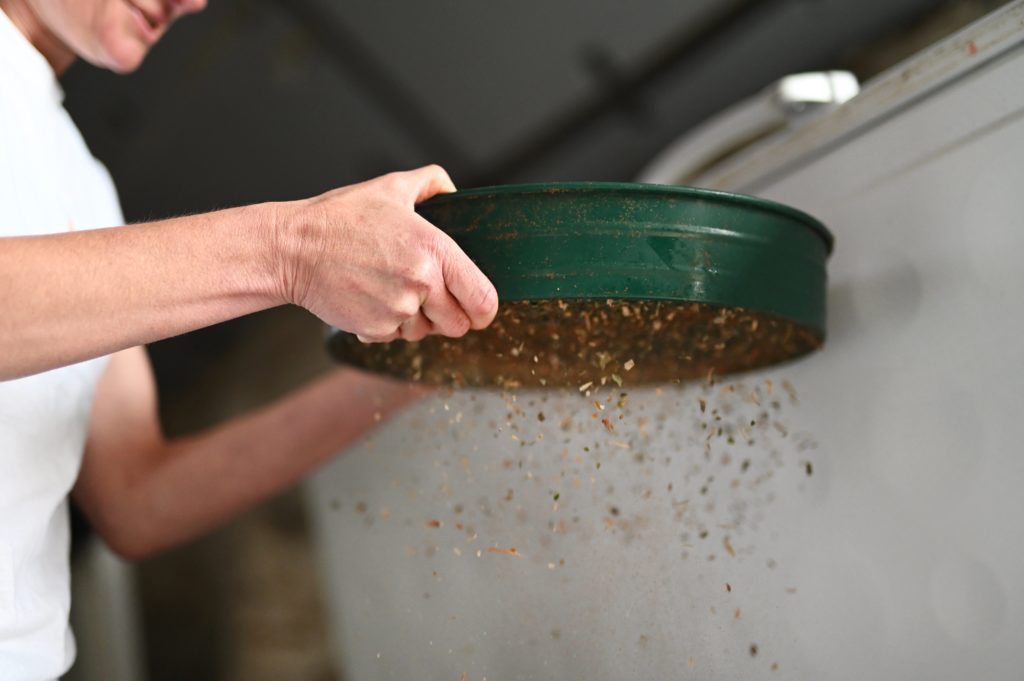
They are then stored frozen, with the final stages of pressing done in their commercial kitchen, near Haddington.
The liquid is then filtered four times to create a bright vibrant coloured unpasteurised juice with a two week shelf life.
The seabuckthorn is harvested from coastal paths, which she admits, "is a lot of heavy work but it is a labour of love, we get so many thorns I cannot tell you."
They harvest selectively from bushes rather than ravaging the entire plant, she adds, "you have to treat seabuckthorn the right way. If you harvest at the wrong time, or press it with leaves in it then that affects the flavour."
They also dry the seeds and pulp, and have worked with Bangor University on extracting pulp and seed oil as well as producing leaf wax, a vegan alternative to bees wax.
The business has also worked in conjunction with Edinburgh and Heriot Watt Universities, to discover more about the plant, it seem she said, "there is nothing in the plant that doesn't have amazing properties, even the bark."
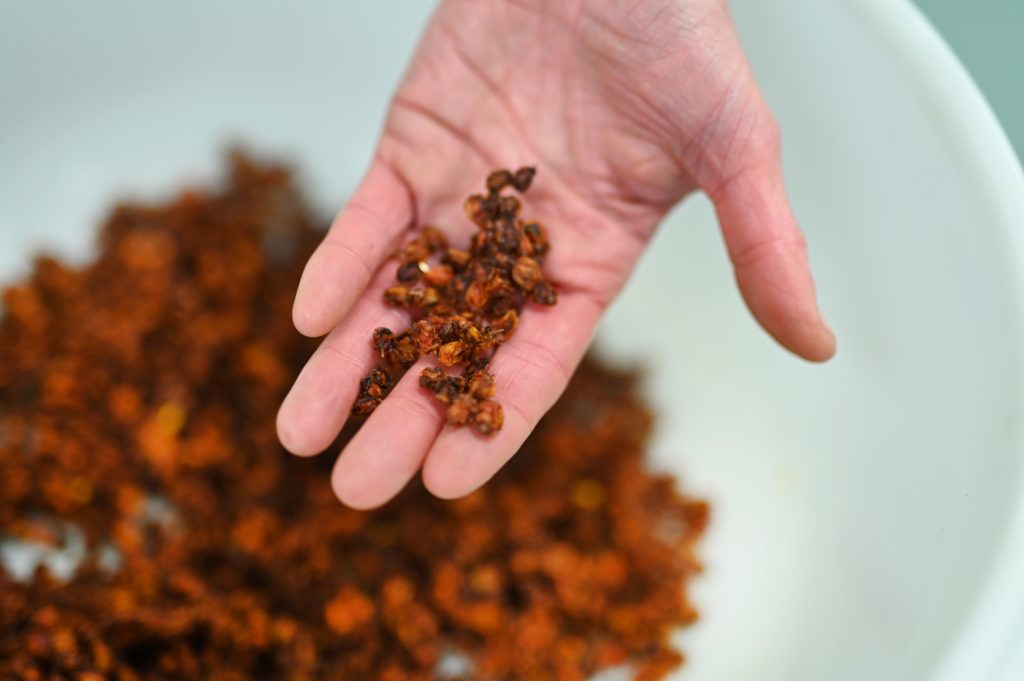
They started selling their juice in 2019 at Edinburgh Food Fest, she said "It was terrifying. The old me is fearless but I'd never done sales before, but everyone was so welcoming.”
They now work with local companies: Raven Botanicals and Sally Gouldstone at Seilich, who "make use of seabuckthorn in their lovely serums and skin products."
The leaves have amazing anti-oxidant properties and make a tasty green tea, and they sell dried berries to Eteaket and the Johnnie Walker Experience, as well as supplying Dean Banks at the Pompadour with juice.
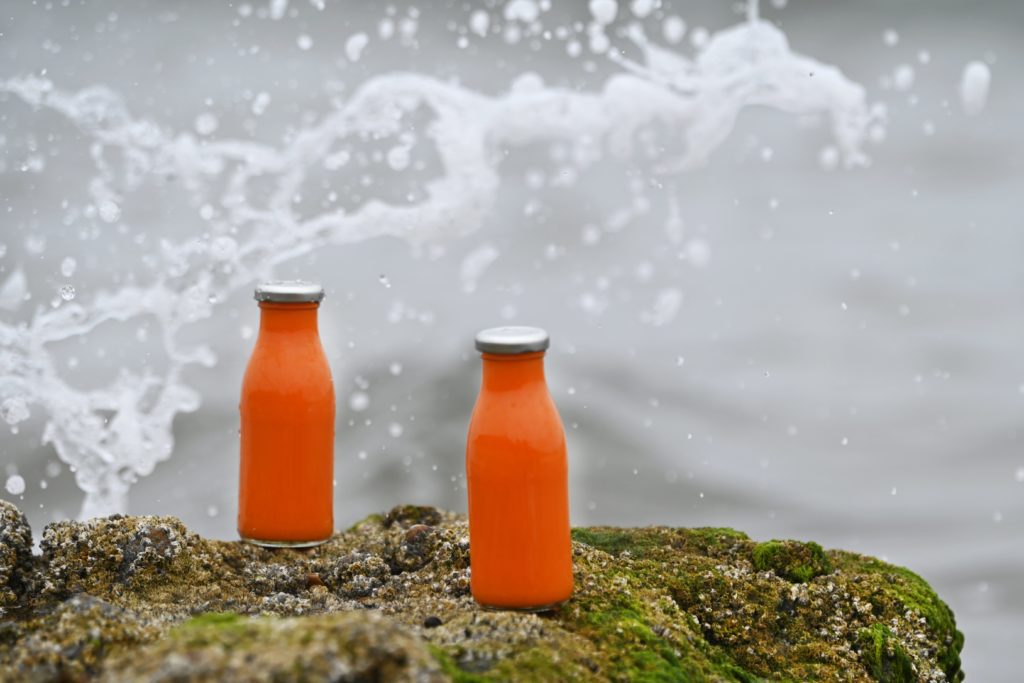
You can find their products in Edinburgh at Panda & Sons, , Root to Market, Edinburgh Fermentarium, Mycobee Mushrooms, The Refillery, and Beach House Cafe, Portabello
Despite Covid setbacks, she said, "we have had amazing interest in our juice and we even sell a lot down in Cornwall."
They also have volunteers who are happy help them harvest, she explains, "they can enjoy being out in nature on a mindful collection, or if you had a bad day, people love to come and bash the berries. It is wonderful to see everyone's enthusiasm and teach people about it."
Kirstie said, "our unique selling point is raw juice, you get an amazing super sour taste with a citrus scent and a hint of strawberries. It is good for mind, body, and spirit."
